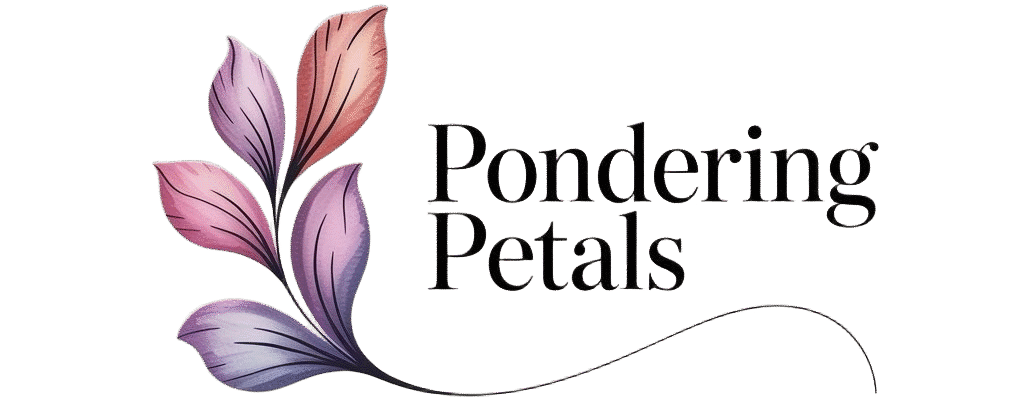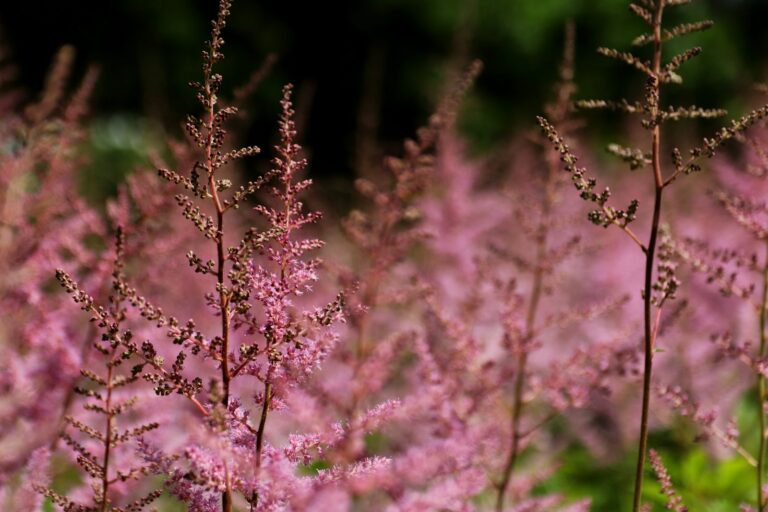Astilbe for Pollinators: Attracting Butterflies & Beneficial Insects
Your shade garden hosts dozens of visiting bees while the neighbor’s sunny plot sits empty. The difference traces to nectar availability in shaded areas where most sun-loving pollinator plants fail. Astilbe fills this ecological gap by providing accessible food sources in partial to full shade conditions[1]. Here’s how to maximize pollinator support in your shaded spaces.
Why Astilbe Works as a Shade Pollinator Plant
Astilbe acts as the perfect pollinator plant for shade gardens with a lack of traditional pollinators. The feathery plumes are hundreds of little individual florets loaded with nectar and pollen[2]. Bees, butterflies, and moths use the bloom of these flowers for the entire blooming season which lasts from June to September[3][4]. This longer flowering window offers pollinators support during critical late-season times when many spring bloomers have done their duties.
A flower structure which appeals to a wide range of pollinator species via a user-friendly design. Small native bees such as sweat bees and small carpenter bees can be found amongst the dense clusters of florets to navigate[7]. The honeybees meticulously climb each plume to reach individual flowers. Butterflies and moths hugging against the hard flower spikes to get to nectar. This diversity of visitors suggests high pollinator value for different insect populations.
Extended Bloom Time Benefits Pollinators
Astilbe blooms provide nectar, and pollen resources during the summertime. Depending on which variety is used, from late spring until late summer plants flower[2]. The early varieties first appear in late May or June. Mid-season varieties peak in July. Later bloomers carry into August and early September[4]. This staggered pattern allows you to provide continual food to grow for planting by planting several varieties with different planting times of distinct flowering.
Late-blooming Chinese astilbe varieties extend pollinator support into September, bridging the gap between summer and fall bloomers.
Filling the Shade Garden Gap
Astilbe’s tolerance of shade is something that distinguishes it from most pollinator plants. Pollinators’ traditional favorites, including lavender, coneflowers and sunflowers, benefit from full sun exposure. Where these choices don’t work, astilbe prefers partial to full shade[1]. This tool has an important role to play in wooded gardens, under tree canopies and on north-facing borders if pollinator pollinators are limited in food sources.
Bee feeding on astilbe is increased in late-summer, when other nectar sources are low. Plants serve as consistent food supplies in the period when bee colonies prepare winter reserves[7]. Late-blooming Chinese astilbe flowering continues into September, filling the blank between summer blossoms and fall asters. Both honeybee colonies and native bee species who are setting their minds on winter are getting a great deal from this timing.
Butterfly and Moth Attraction
During the bloom season, butterflies come to visit astilbe flowers frequently. Flower clusters that are flat-topped or pyramidal support the landing platform. Astilbe was the nectar source for several butterfly species including small skippers[3]. The pretty pink, purple, red and white flowers make butterflies look good and the nectar easily accessible encourages them to come to visit.
Native Astilbe Provides Ecosystem Benefits
Native astilbe species provide added wildlife benefits outside of the use of imported types. Astilbe biternata, characteristic of Appalachian habitats and being a larval host species for many butterflies[6]. The native species also hosts native bees, moths, and other insects that have adapted to native plant communities. Native astilbe planting fosters ecosystem connectivity in the community and offers unique habitat not available in non-native species.
Other beneficial insects besides pollinators also use astilbe plants. Dense leaves shelter predatory insects that control garden pests[5]. The site of astilbe stands is used as hunting grounds and refuge sites for ground beetles, lacewings and parasitic wasps. The flowers lure hoverflies whose larvae eat aphids. So this form of beneficial insect community cannot be limited to pollination services.
Deer Resistance and Wildlife Garden Reliability
As a result of deer and rabbit resistance, astilbe is a dependable perennial for wildlife gardens. Astilbe is particularly spared from the severe browse damage encountered by numerous pollinator plants—Deer and rabbits predominantly tend to avoid astilbe[5]. Unencumbered by protection, this resistance allows bloom production to continue year after year without incident. The plants retain their pollinator resources even in high deer-counting areas.
Their moisture needs match well with a good number of wildlife garden situations. Astilbe require moist and consistent soil that never dries out completely. This preference is in accord with habitats near ponds, streams, rain gardens where wildlife mainly congregate. Placing astilbe in the same moisture-retentive areas supports both plant health and wildlife function in the same environment.
Astilbe’s deer resistance ensures reliable pollinator support year after year, even in areas with high browse pressure.
Varieties for Different Garden Settings
Various types of astilbe are used in crops to provide tailored support for pollinators in different gardening conditions. Some compact varieties 10 inches to 12 inches are suited for container gardens and small spaces[2]. Mid-sized choices 18 to 24 inch grows are good in mixed borders. Tall varieties reaching 4 to 5 foot make for great presence in woodland terrain. Each size category provides pollinator perks whilst matching specific garden situations.
| Variety Size | Height Range | Best Uses | Pollinator Value |
|---|---|---|---|
| Compact | 10-12 inches | Containers, tight spaces, edges | High nectar density in small areas |
| Mid-sized | 18-24 inches | Mixed borders, foundation plantings | Reliable season-long support |
| Tall | 4-5 feet | Woodland gardens, backgrounds | Maximum visibility for pollinators |
Companion Planting Strategies
Companion planting with astilbe broadens seasonal support for pollinators. Spring-growing lungwort and bleeding heart provide early nectar before the Astilbe flowers begin[7]. Coral bells bloom with astilbe in summertime. For late-season food, there are Japanese anemone and toad lily[7]. That layered approach keeps pollinators from spring to fall in shady areas.
Recommended companion plants by season:
- Spring bloomers: Lungwort, bleeding heart, coral bells
- Summer companions: Coral bells, hosta flowers, foxglove
- Fall extenders: Japanese anemone, toad lily, late asters
Cut Flowers and Wildlife Balance
The quality of the cut flower means a bonus, more than just as much to the wild. The long-lasting plumes look like attractive additions to any environment, and keep attracting people’s attention when they are in. But, left on-site, this makes possible ongoing entry to pollinators. Selective cutting strikes the right equilibrium between human enjoyment and wildlife needs.
Astilbe flowers remain visible to pollinators after color fades. The dried plumes hold structural interest through fall and early winter[2]. Some late-visiting insects use spent flowers as habitat. Standing dead flower stems and leaving them in the garden until spring creates a breeding ground for beneficial insects that move in the following year.
Soil and Wildlife Garden Enhancement
Improving soil surrounding astilbe plantings aids the wider wildlife garden. The plants require organic, high humus soil[2]. Compost and organic matter helps create conditions that support organisms in the ground, earthworms, and insects that dwell on soils. It underpins an entire garden ecosystem beyond the surface pollinator activity.
Container astilbe adds pollinator support to patios, balconies and small spaces. They do well in container culture as long as they are kept moist[2]. With this flexibility, pollinator gardens could also operate in regions devoid of ground plantings. Containers can be placed adjacent to sit-side in which pollinators observation occurs.
Year-Round Garden Interest
The beautiful foliage keeps the garden attention throughout the growing season. Fern-like leaves create pleasing texture with shade borders even when not flowering[1]. This year-round presence allows astilbe to contribute for overall structure to the garden, as well as seasonal pollinator value. The foliage also provides small insects with microhabitat to avoid predators.
Low-Maintenance Pollinator Gardening
Very few maintenance needs are required for pollinator-friendly astilbe gardens, aside from moisture control. The plants can tolerate almost all insects and diseases without any chemical agents[2]. This not-hands-on approach excludes pesticides that harm beneficial insects. Organic care methods protect both target pollinators and the broader beneficial ecosystem.
Divisions every three to four years maintain robust plants and plenty of flowers. This timing prevents overcrowding that reduces production[2]. Pollination support capacity is directly supported by robust flowering. A constant division leaves maximum nectar and pollen year after year.
Fertilized early spring enables strong bloom development. Organic or compost fertilizer and or other balanced organic fertilizer application gives the nutrients without chemical residues[2]. This strategy maintains the soundness of the plant, while protecting the garden from visiting pollinators. Healthy plants produce more flowers and nectar than stressed specimens.
Mulching for Wildlife Benefits
The mulching around astilbe has wide ranging wildlife purposes. The extra organic mulch layer supports soil moisture that plants require[2]. It also creates an environment in the ground where beneficial ground-dwelling insects that live on the ground thrive — such as predatory beetles. Since soil is easier to live in when mulch decomposes, soil structure is improved, and decomposer organisms, which make ecosystems healthy, are fed.
Creating Pollinator Corridors
Pollinator corridors are built up by plantings of astilbe through shaded landscapes. Connecting sunny and shaded spaces to the right plants allows pollinators to flow through patches in habitat efficiently. Where sun-loving alternatives don’t apply, astilbe fills shaded strips of these corridors. Connecting this with other sites bolsters overall pollinator support across the property.
The long-term reliability of astilbe makes it a foundational pollinator plant. These perennials come back year after year with increasing size and flowering[2]. This durability means astilbe is virtually permanent. Unlike annual plantings, which year after year are replaced. Forming astilbe clumps creates reliable pollinator assets that become more robust with time.
Conclusion
Astilbe provides full-service pollinator help in shade gardens when options are minimal. The plants welcome bees, butterflies and helpful insects during longer bloom seasons. Native species provide added ecosystem benefits via associations with host plants. Deer resistance is sufficient for robust performance with no protection. If you need regular moisture, organic soil improvement and a variety selection that works with your timing goals, success is in the eye of the beholder. Begin with astilbe selections for your hardiness zone and shade availability, then lay them in moisture-retentive areas over years of pollinator usage and wildlife habitat value.
Key Sources:
[1] 7 Shade-Tolerant Pollinator Plants For Your Garden | Butterfly Bushes
[2] All About Astilbes | Longfield Gardens
[3] Astilbe ‘Heart and Soul’ | BBC Gardeners World Magazine
[4] Top 15 bee friendly ground cover plants | Plantura Magazine
[5] Astilbe | Clark County Green Neighbors
[6] Astilbe Plant Care and Growing Tips | Birds and Blooms
[7] Do Bees Like Astilbe | Bees In Cities
[8] June Blooms for Pollinators | UConn Ladybug Blog
Lily Morgan is a home gardener. She grows houseplants and designs small-space gardens. She shares what she learns from experience. Lily offers simple, practical tips for plant lovers. Her goal is to help others garden with confidence. She wants to help them grow, one leaf at a time.


